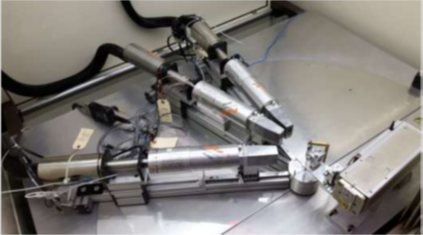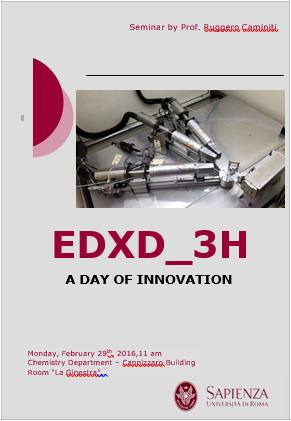EDXD-GROUP |
|
ENERGY DISPERSIVE X-RAY DIFFRACTION
|
|
ENERGY DISPERSIVE X-RAY REFLECTOMETRY
|
Project Diffractometer 2
EDXD_3H: The Full Power of X-Rays in a small lab
 |
|
EDXD_3H: the new frontier of X-Ray laboratory diffractometers
EDXD3H: The New EDXD Diffractometer at Rome Sapienza University - High Speed, High q and High Savings
EDXD3H
|
We are proud to present to the scientific community the new prototype of our laboratory Energy – Dispersive Diffractometer.
Our new instrument, equipped with three solid state Germanium detectors, is capable of collecting the full diffraction patterns of non-crystalline samples (e.g. liquids, amorphous solids, other soft matter systems) with a very high signal-to-noise ratio, in only 3 hours. Such a short overall acquisition time, in combination with the relatively low energy of the beam, would result in a global low X-Ray dose (operation power = 50 kV * 40 mA = 2000 Watt) and allows the investigation of biological samples very sensitive to radiation damage. The operating cost is very competitive, if compared to commercial instruments (about 300 euros for a complete measurement), and the data obtained have a very large Q range, extended up to 24 Å??1. We encourage our colleagues to send us their samples for measurement. After the data treatment process, we will provide them with the structure function of the system (I(Q) or S(Q)) and its Fourier transform in real space, as Differential Distribution Function (Diff(r)). Further details can be found in the brochure distributed at the official presentation of the instrument at Rome “La Sapienza” university, which is attached. |
Ruggero Caminiti
Chemistry Department, Rome “La Sapienza” University
|
|


